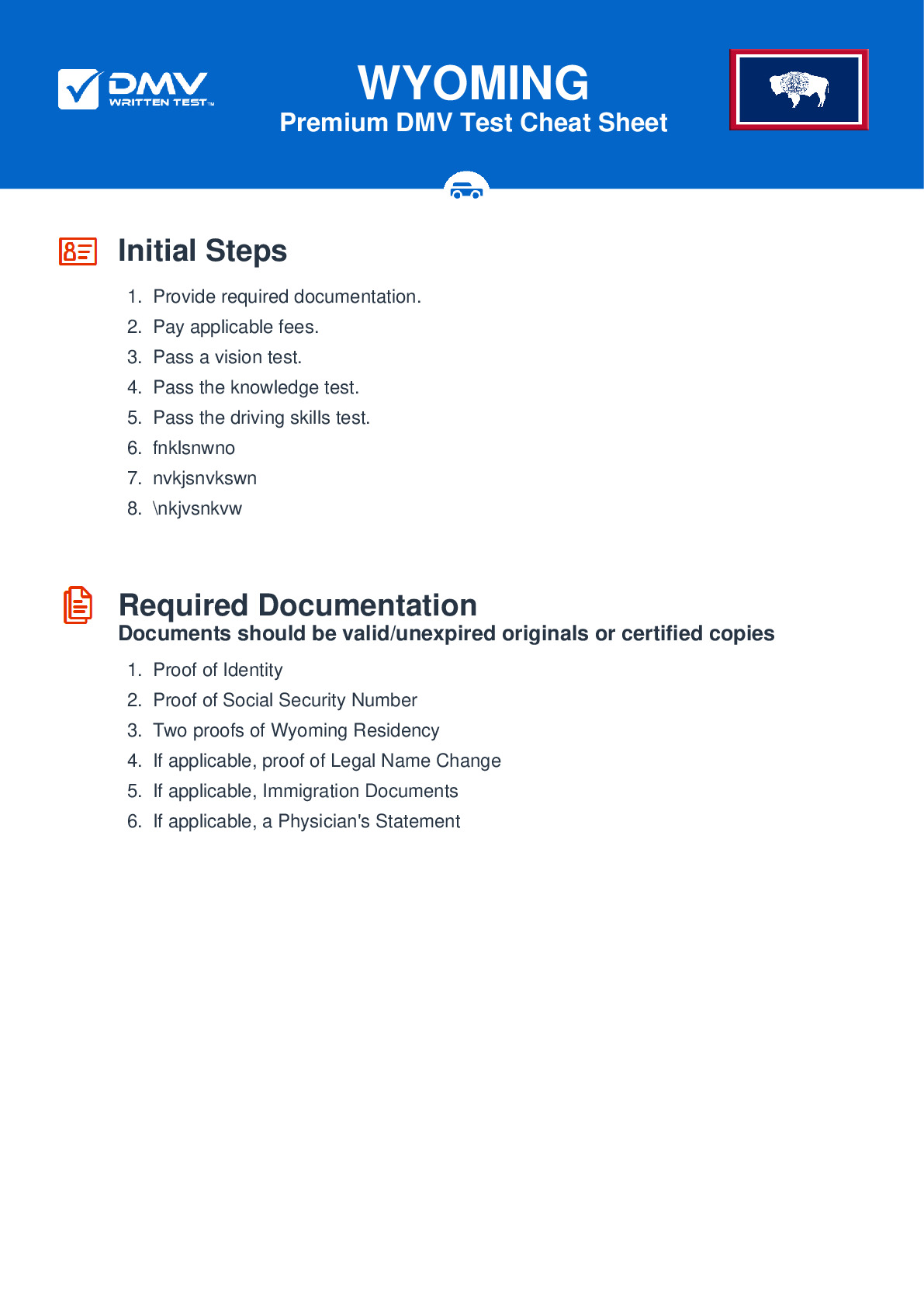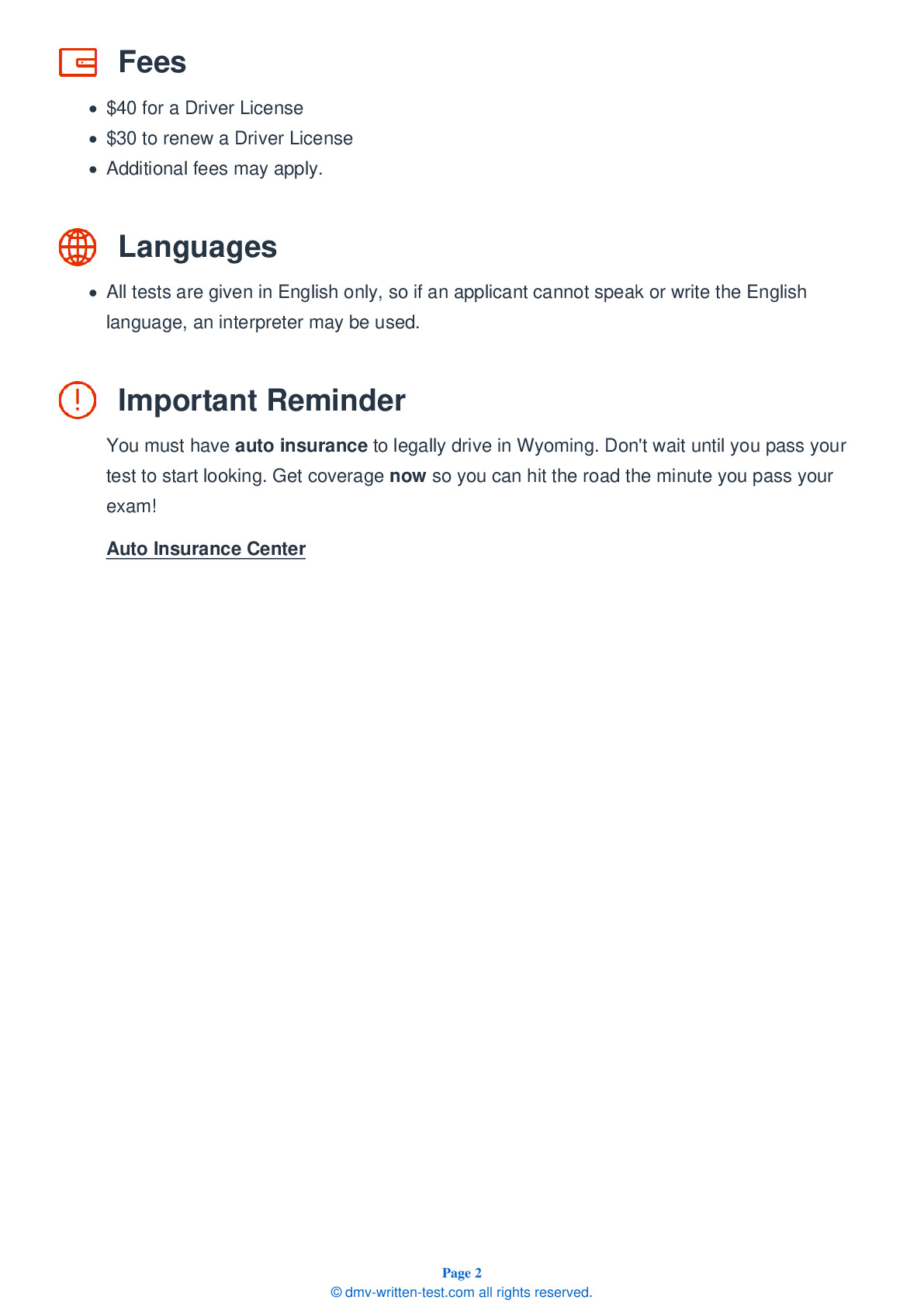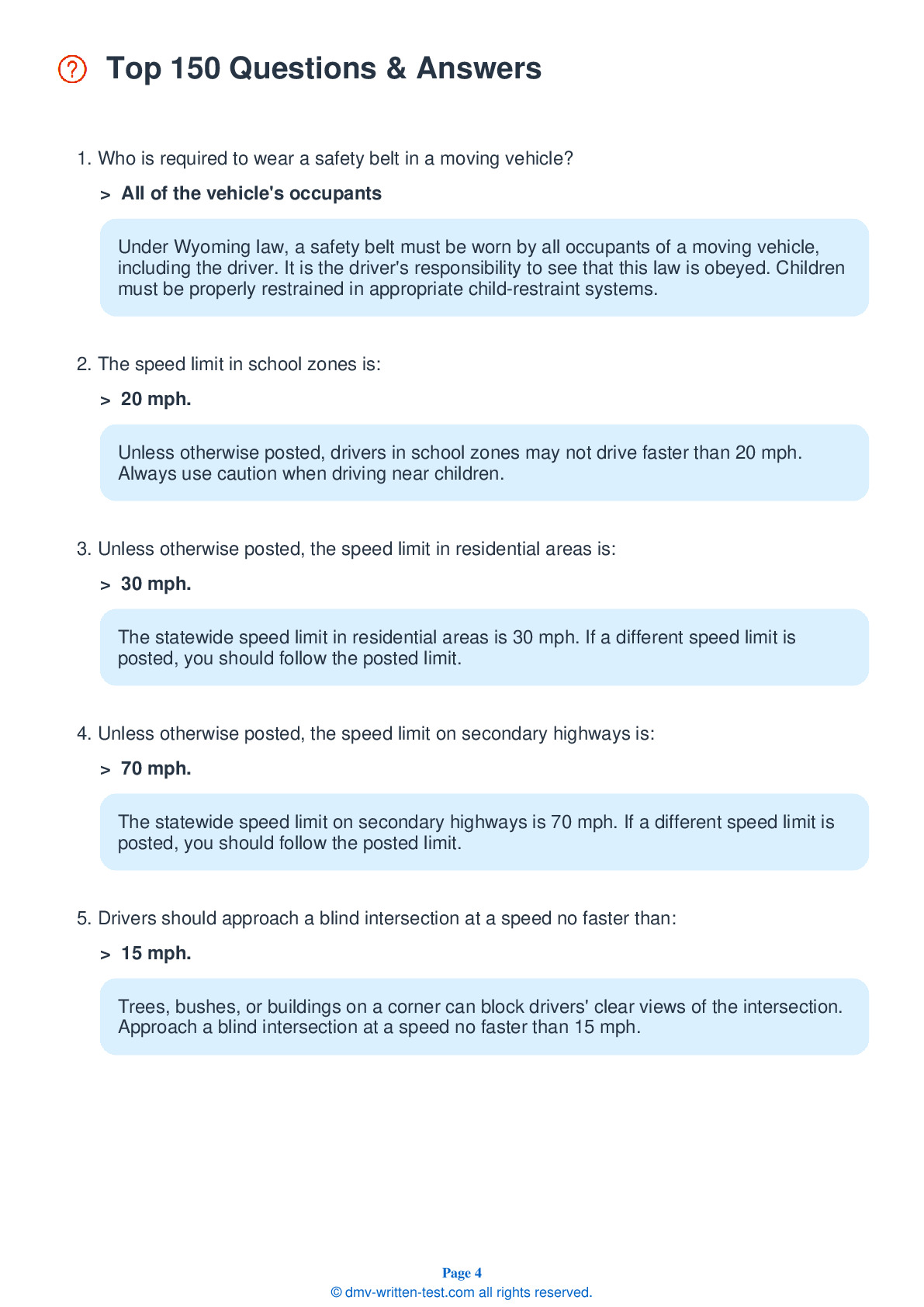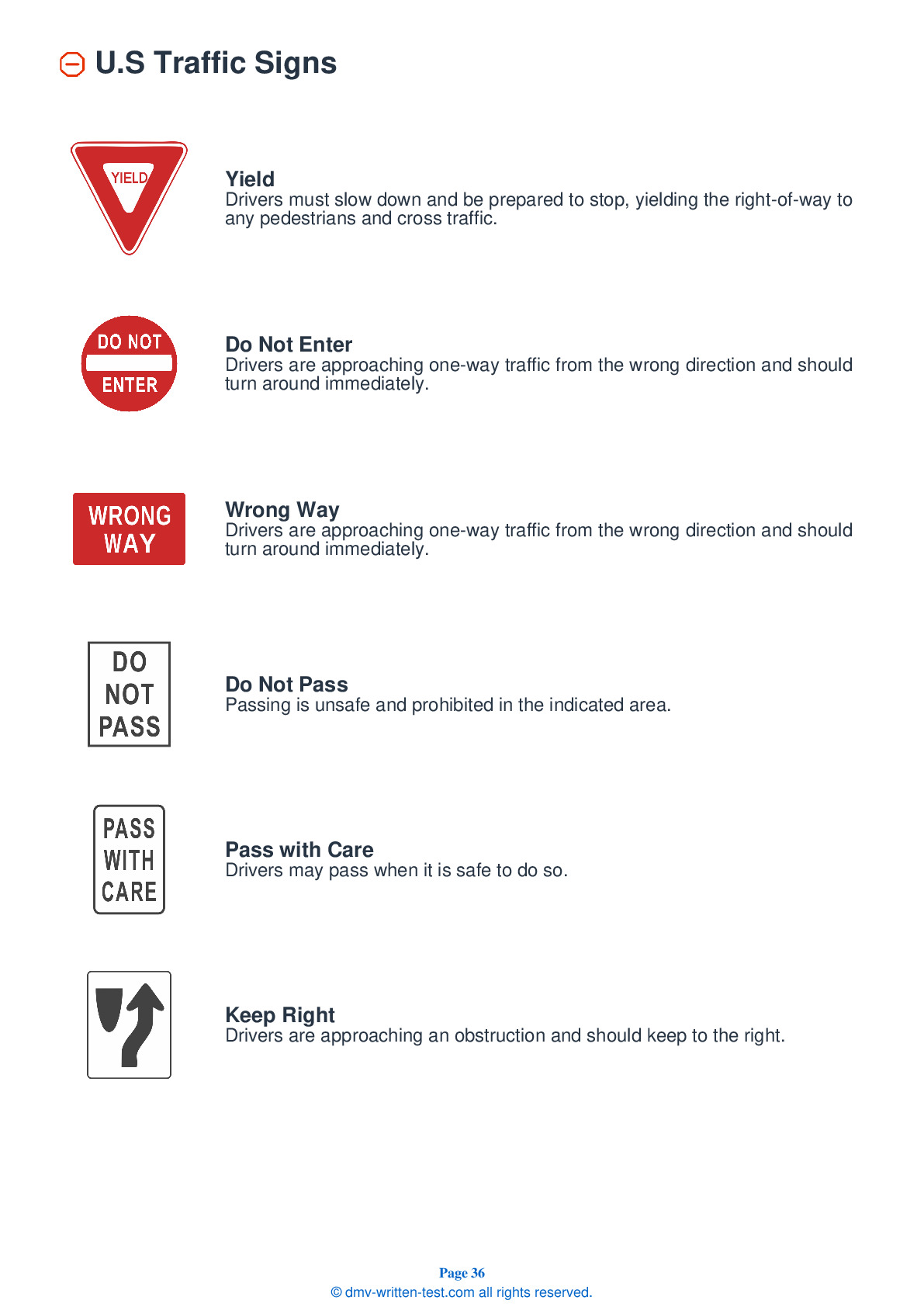2025 Wyoming Permit Test 14
The following questions are from real DMV written tests. These are some of the actual permit questions you will face in Wyoming. Each permit practice test question has three answer choices. Select one answer for each question and select "grade this section." You can find this button at the bottom of the drivers license quiz. For a complete list of questions and answers for Wyoming please visit https://cheat-sheets.dmv-written-test.com/en/wyoming/car.
Number of Tests
Number of Question
Passing Score
43. You may cross double yellow lines to pass another vehicle if the:
Explanation
A broken yellow line in the center of the road indicates that traffic next to the broken yellow line may pass, if it is safe to do so.
44. When a car with bright headlights drives toward you at night, you should:
Explanation
To avoid being blinded when driving at night, do not look directly at the headlights of oncoming cars. Instead, look toward the right edge of the road until the oncoming driver has passed.
45. Extra space in front of a large truck is needed for:
Explanation
Because they are larger, trucks take longer to stop than cars traveling at the same speed. Other drivers should not pull in front of a truck and then slow down or stop.
46. A broken yellow line down the center of a road indicates that:
Explanation
When broken yellow lines separate the lanes of traffic on a two-lane roadway, any driver may pass when there is no oncoming traffic.
47. Water on the road can cause a vehicle to hydroplane. Your car may hydroplane at speeds as low as:
Explanation
Hydroplaning occurs when there is standing water on a roadway. At speeds up to 35 mph, most tires will channel water away from the tire. As your speed increases past 35 mph, tires cannot channel the water as well and your tires may start to lose contact with the road and ride over the water like a set of water skis.
48. Prior to entering a curve:
Explanation
You may drive more slowly than the posted speed limit, based on road conditions, but it is illegal to drive any faster than the posted speed limit. Some conditions which require reduced speed for safety include approaching curves or hills where visibility is limited, driving on slippery roads, and driving on roads where animals and pedestrians are present.
49. In inclement weather, you should:
Explanation
When driving during unfavorable weather conditions, avoid slamming on the brakes and making sharp, quick turns. These behaviors will make controlling your vehicle in inclement weather even more difficult.
50. Always stop before crossing railroad tracks when:
Explanation




